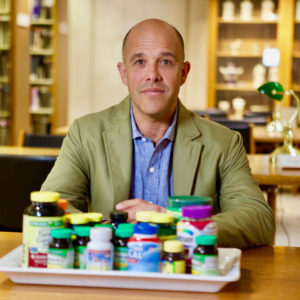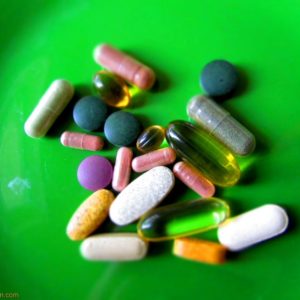In Australia, products containing vitamins, minerals, Western herbal medicine, Traditional Chinese medicine, Ayurvedic, Indigenous and Homeopathic medicine are classified as complementary medicines.
To be legally marketed in Australia, all medicines (including complementary medicines) must be included on the Australian Register of Therapeutic Goods (ARTG). The only exception are some homeopathic medicines. Medicines are divided into two categories based on the risk profile of the product: Registered (AUST-R) or Listed (given the label AUST-L).1
Registered products are higher-risk medicines which are thoroughly evaluated by the Therapeutic Goods Administration (TGA) for safety, quality and efficacy before they can be marketed. They include some over-the-counter medicines (OTC) medicines such as ibuprofen and all prescription medicines. Prescription medicines cannot be advertised to the public.
Listed medicines (most complementary medicines) can only contain low risk ingredients that are permitted for use by the TGA. They must be manufactured by a facility holding a Good Manufacturing Practice (GMP) license to assure product quality. They can only make claims (for which the sponsor must hold evidence) for health maintenance, health enhancement, or for the alleviation of non-serious, self-limiting conditions. When submitting a listed medicine application to the TGA, the sponsor must certify that the goods in the application meet all the above requirements. There is no pre-market evaluation of these requirements but the TGA does conduct a limited number of post-marketing assessments each year. There are currently over 16,700 complementary medicines listed on the ARTG.
Foods and food-related health claims are regulated by State and Territory food regulatory bodies by reference to the Australia New Zealand Food Standards Code.2 For some products it may be unclear if they are foods or medicines. A Food-Medicine Interface Guidance Tool is available to assist.3
Over the last few years, post-marketing assessment of listed medicines have revealed an unacceptably high rate of regulatory non-compliance. For example, in 2015-16 the TGA verified compliance breaches in 327 (80%) of 408 products tested and in 2016-17 in 330 (79%) of 417 products tested.4 The commonest problems identified were misleading labeling, packaging and advertising material, and inability to produce evidence to substantiate the claims made.5
Listed and OTC medicines can be advertised to the public but must comply with the Therapeutic Goods Advertising Code.6 Complaints are heard by the Complaints Resolution Panel who deal with around 300 complaints a year7. A third are referred to the TGA, either because the medicine is not on the ARTG (a breach of the Therapeutic Goods Act 1989) or because of non-compliance with the Panel’s determination. Most complaints dealt with by the Panel are for advertisements which have not been formally pre-approved, mainly on the Internet and social media, which account for around 70% of complaints. Around 96% of all complaints dealt with by the Panel are upheld.8
On July 1, 2018 the TGA introduced a new, legally enforceable Therapeutic Goods Advertising Code, limit advertising creativity of listed medicines by mandating the use of a permitted indication (claims) list, enhance the complaint system, increase post-marketing surveillance and apply more stringent and timely penalties for regulatory violations.9 There will be an independent review of these measures after three years to see how effective they have been.
About the Authors – Dr Ken Harvey MBBS (Melbourne), FRCPA ADN, Alanna Rottler
Ken Harvey is an Associate Professor in the School of Public Health, Department of Epidemiology and Preventive Medicine, Monash University and is Director of Medreach Pty Ltd. He has a longstanding interest in the promotion and regulation of therapeutic goods.
Alanna Rottler is a Bachelor of Medical Science and Bachelor of Medicine/Surgery student at Monash University conducting a research project under the supervision of A/Prof Ken Harvey on the consumer understanding of complementary medicine regulation in Australia. Both Ken & Alanna worked together to advise the Vitamania team on Australian regulation of the dietary and supplement industry.
REFERENCES
[1] https://www.tga.gov.au/consumer-educational-materials
[2] http://www.foodstandards.gov.au/Pages/default.aspx
[3] https://www.tga.gov.au/food-medicine-interface-guidance-tool-fmigt
[4] https://www.tga.gov.au/annual-performance-statistics-reports
[5] https://www.tga.gov.au/book-page/3-complementary-medicines-1
[6] https://www.tga.gov.au/publication/therapeutic-goods-advertising-code
[8] http://www.tgacrp.com.au/wp-content/uploads/CRP-complaints-summary-1-Jul-2016-to-30-Jun-2017-including-graphs.pdf
[9] https://onlinelibrary.wiley.com/doi/full/10.1111/imj.13548


